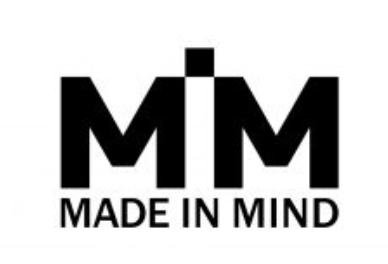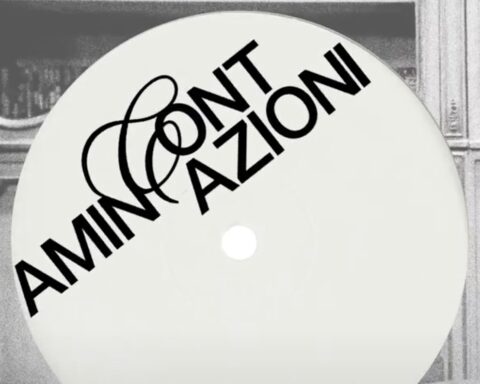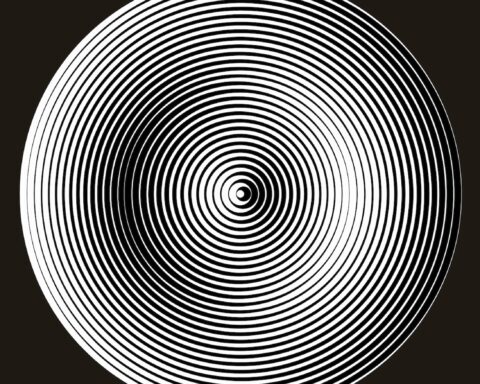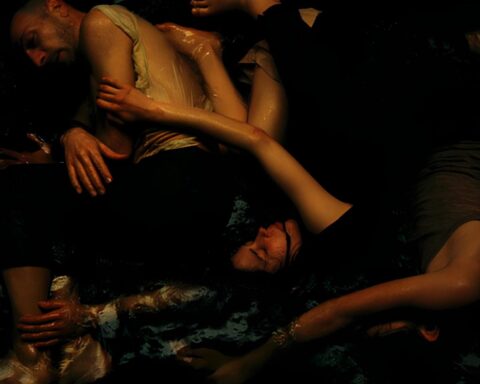Azalea Seratoni: These words by Giorgio Manganelli made me think of you: “[…] personally, however, when I consider Italian literature in its entirety, I do not see a De Sanctis-like or a consistent historiographic framework, but rather an Arabian Nights situation endlessly shifting from one author to the next, from one book to the other, through entryways, small doors, passages immediately vanishing once they are crossed, in a highly fanciful and irregular manner” (Manganelli 2020).
Alberto Mugnaini: Yes, I cannot but agree with this vision of a bustling motion through a thousand different passages and entryways. I have Manganelli’s Letteratura come menzogna here with me. A book containing single, precious, unusual words, in a display of unpredictable combinations, as well as the rhetoric and dialectics of a Baroque preacher, and pages of text analysis of a squinteyed mean structuralist highlighting all the text’s snares, its reticence, false appearances, always moving from an oppositional standpoint, never forgiving towards the authors, who are accused of lowliness, slovenliness, and superficiality. The charm of an author comes from his flaws, the very place from where originality stems. Manganelli basically believes the same thing that Lea Vergine has more recently affirmed about art, that is that literature, in short, is not something for decent people.

AS: You might not be a decent person, but you certainly are not a simplified person. You contain multitudes. In the late 1980s you started complicating matter, folding metal sheets as if they were paper, curling iron rebars, welding pipes in all sorts of different combinations and torsions. And then, as Gadda had it, you discovered Baroque inside of things. You chose, collected, sectioned and assembled objects to give them new forms and names: Lapilla, Deliminia, Alissia, Almerilla, Valmadreno, Tulipante, Tormalizio, Idrospirio, Farfanito, Grimorello, Grinfialoro and Friggibrino. And you are still drawing, even after having filled a thousand A4 sheets, and then a hundred; then yet another thousand, then a hundred, like the countless kisses Catullus gave Lesbia. And then there are your essay works, your studio open to other artists, your interactions with them and your interest in their practices. And then the Rosso Fiorentino book and exhibition. Is all this the expression of a single system of interests or does it appear that way only due to the fact these actions have been carried out by the same person?
AM: The answer to this question, if an answer can be given, can only be retrospective, looking back to a journey that today, after about thirty years, is about to enter its final stretch. All those working in the humanistic field experience a variety of means of expression, explore different disciplines and go through a somewhat schizophrenic state of mind, a state of things, that effectively tends to avoid all accurate and planned acts of self-analysis: certainly during the process one does not have the impression of operating within the tracks of a system, I can personally attest that one feels weltered during a journey based on improvisation, made of no beaten tracks, ups and downs, swerves, dead ends, and interrupted pathways. You think you are travelling across a familiar landscape when suddenly you find yourself in an unknown land, you think you are sailing in safe waters only to realize you are rowing beyond the Pillars of Hercules. There is no way of defining a route because the coordinates are unstable and follow diverse and non-homologous numeric codes.
And that is not all, because I am asked whether there exists a connection between the different aspects and disciplinary realms of my artistic and intellectual activity, and between the latter and my relational and emotional life, to not only find a connection between the various forms of art I explore but even between art and life. I am not sure that the consistencies, correspondences, and structural nuances I should outline would be something more than the reflection of interpretational fantasies or self-absolving shortcuts: I take this question as an invitation to somewhat clarify a process and an existential journey that for its inclination and constitution retains a chaotic and impromptu quality.
AS: Perhaps it was the word “system” that triggered this “tangle, jumble, muddle”, because I was thinking “fireflies”. At the end of his book La notte buia (Muggiani, 1956), Bruno Munari used a sheet of black porous paper to illustrate the night. Pierced with small circular holes the page was backed with a yellow sheet (a foldable square sheet of yellow paper glued onto the book’s inside back cover with the author’s biography written on it) transforming the small holes into a swarm of fireflies. The fireflies don’t glow all the time. The fact that they are represented by holes pierced through the black paper, produces an unstable effect. When the black page and the yellow sheet are apart, their glow is dimmed, when the black page is nice and flat on top of the yellow their light shines through. Perhaps this is what I was trying to ask you: an endlessly changing picture, a single discourse endlessly continuing prompted by different pretexts and under intermittent lights…
AM: I believe that this constant shift from one thing to the next leads one to endlessly put oneself out there, to avoid the dangers of automatisms, of habit, what we might define one’s personal clichés, the readymade formulas, the traps of specialisation. Conflicts, imbalances, hitches, continuous changes of mental dimension force you to rethink things, to start over, in a systematically disconcerting manner. Expanding the range of our specialization, diffracting it along diverse pathways and directions means running into a permanent state of non-definition. Stable supports and points of reference fail us. Every time is like starting over, you find oneself following a route only to realise that the map is a different one altogether. The sorrowful attitude of Musil’s man without qualities comes to mind, a character whose life had been a “heroic struggle of a soul resisting all compromise, never suspecting that in this way it was only creating its own dividedness”. The pretension to excel in multiple disciplines is an act of hubris, and the destiny that awaited the poor Ulrich is never completely warded off.

Alberto Mugnaini, Untitled, 2018
Ink on paper 30 x 21 cm – 11,8 x 8,2 in

Alberto Mugnaini, Untitled, 2018
Ink on paper 30 x 21 cm – 11,8 x 8,2 in
AS: I think we should look back. Where did it all begin?
AM: I always understood the subject of my research as something multifarious and permeable, an openwork field of diverse accesses and passages. My way of studying and working has always been marked by discontinuity, if not fickleness. My graduation thesis entitled La Tavolozza di Babele (The colour palette of Babel) was an investigation of my understanding, perception and above all interpretation of sixteenth- and seventeenth-century colours. At that time colour took on a primary role, not so much in the context of history of art but rather in the practical aspects of life, becoming a necessary indicator to orient oneself and find one’s way in our maze-like world, elevated as a diagnostic and classification tool, a basic criteriom for scientific experiments, expanding to diverse sectors of everyday experience. Colour was read as a symptom. Therefore something that should not be sought in artistic essays, where it ultimately had a limited reception, but in the descriptions of live experiments, in the technical, medical, zoological and botanic sheets, and in all those theoretical-practical manuals or almanacs significantly defined as “tesori” and “selve”, places of accumulation, tangles, reflections, analogies, echoes, correspondences, where book contents and the tangible experiential quality of the world identified and mutually exchanged to give rise to a truly babelic polyphony of voices.
My later research on the iconographic aspects of Rosso Fiorentino’s work, followed the same multidisciplinary criteria, leading me to investigate, among other things, the affinities between the hallucinated and bewitched figures of this painter and a range of psychotic disorders whose descriptions can be found in medical essays of the time: the culture of a set period cannot be studied in isolated compartments, it irradiates in multiple directions leading to diverse pathways of research.

AS: Are drawings writings or figures?
AM: In drawings, this infinity, this boundless virtual quality, is kept at bay by a mental condition of surrender, as if drawing were a form of writing that continuously rewrites itself. It is in fact a condition of writing reversibility, setting off along one direction leaving aside all distinctions between narration and figuration. If I start taking notes, for instance, invariably the pen takes over my hand, my writing loses consequentiality, familiar letters deform, their loops multiply, their ascenders stretch and bend awkwardly, and their counters become spirals in an unstoppable tangle. It is a return, to some extent, to letters, to a hieroglyphic dimension, only that in their urge and ruffle, they are unable to anchor themselves to a defined meaning/symbol remaining open to a babelic digression, interposing the figurative meaning with an irreverent and wild nonsense, tying together the statements and the insignificance… A mere Dionysian dance of signs which dare to climb into coils and arabesques, bending and stretching in agile poses and tapered figures, sometimes only acknowledging the fact they end up jaded and hindered in idle scrawls, in breathless and cacophonic scribbles suffering cramps and glitches leading to dead ends, with no idea of how to get out if not with leaps and run-ups, tugs and faltering steps. These signs that on the one hand retain the rhythm, the musical legato of writing, the fluttering excitement, the complacent swerves and inertial fluidity, on the other escape its control: they swerve out of their lanes, they spread out relentlessly, incessantly murmuring the order to break ranks, pleased with their unruliness. We could describe it as a drunken and rambling writing that being unable to describe things tries to express them, experiment them even among its coils: trying, copying, disfiguring, cursing them. Alphabets of the infinite and confusing babel that exists inside us, volatile meanings, rough digits, lazarettes of calligraphy.

AS: These are Duchamp’s words to Francis Steegmuller: “[…] ten years ago I was still known as an artist that had been inactive for a long time, a has been […] Then came Abstract Expressionism, Pop Art, and people started taking interest in some of my old ideas. When I left my studio on the 11th Street, for example, I sold my fridge to Tinguely. That was a good fridge. And what did Tinguely do? He mounted a sound system inside it and presented it at the Sidney Janis Nouveaux Réalistes exhibition. That is the effect of the old readymade on the new generation. They love me because I provide a justification to their flights of fancy” (Marcadè 2007). Do you feel you should thank Duchamp too?
AM: My sculpture work consists in an activity of continuous metamorphosis of the ready-made, in the research of a “maniera” buried in the heart of everyday objects, detecting in the inner substance of the neglected and banal the invisible connections and hidden recursive sequences. It is as if reality were seen through a mysterious and secret filigree of its own, like a deposit of unexpressed shapes, of undetected material potential, of morphologies drowned in everyday habits. It is about discovering a transfigured reality, captured in its ongoing closure and opening, sliding the sheer evidence of things within the boundaries and into a secret picture, chasing new unexpressed manifestations, searching for that solution among infinite possible metamorphosis, fractioning objects to then be able to piece them back together in unprecedented combinations.
Musil comes back to my mind. In the first pages of Man without qualities he affirms that just as there exists the sense of reality, there also exists a sense of possibility. In the most humble and neglected objects, in every most deteriorated piece of scrap, be it a drainer, a bottle of shampoo, we can catch a glimpse of a fragment of form that must be reinvented in the game of unprecedented possibilities. As Merleau-Ponty had it: “Thus, it is essential for the thing and for the world to be presented as open, and to promise us always something more to see”.








